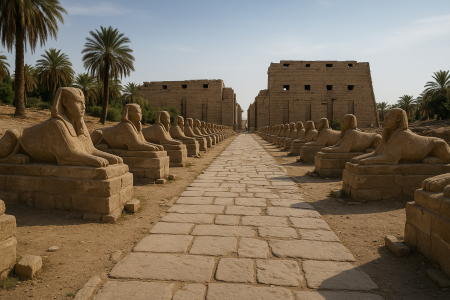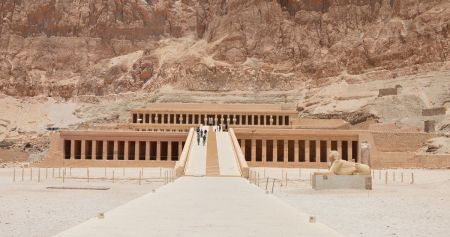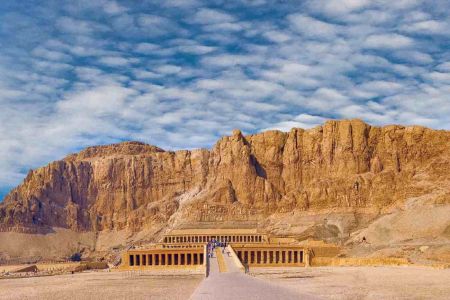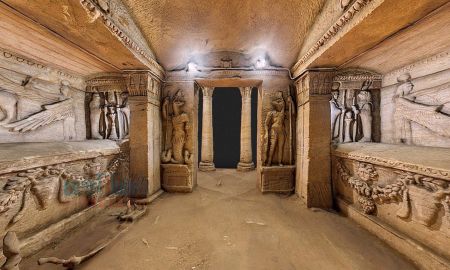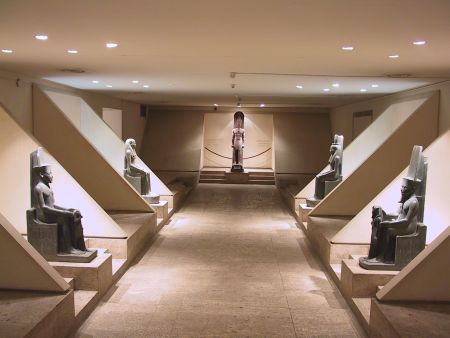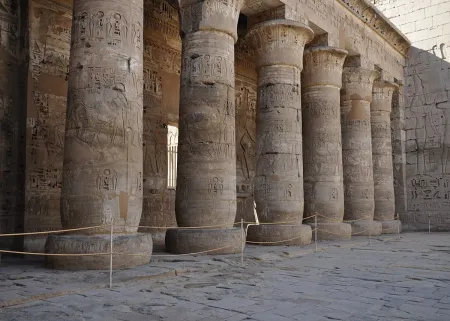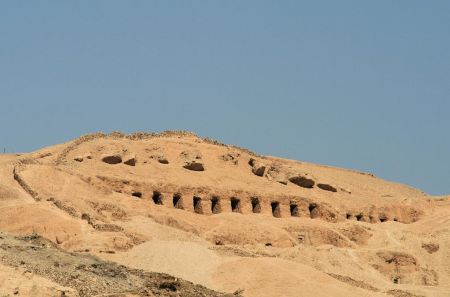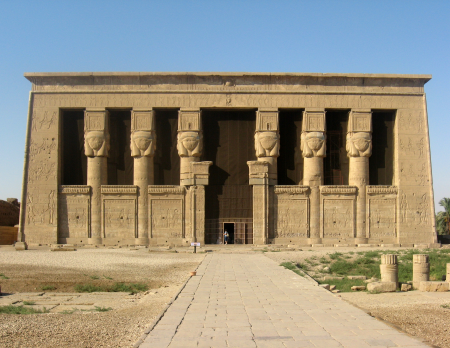Tomb of Nefertari – A Complete Guide to Egypt’s “Sistine Chapel of Ancient Art”

Deep within the Valley of the Queens in Luxor lies one of the most breathtaking treasures of ancient Egypt: the Tomb of Nefertari. Carved more than 3,200 years ago for Queen Nefertari Meritmut, the beloved wife of Pharaoh Ramses II, this extraordinary tomb is celebrated as the finest example of Egyptian artistry ever discovered. Often dubbed the “Sistine Chapel of Ancient Egypt,” the tomb dazzles visitors with vibrant wall paintings, symbolic hieroglyphs, and intricate details that have miraculously survived the test of time.
Unlike other royal tombs hidden in shadow, the Tomb of Nefertari in the Valley of the Queens bursts with light and color. Every inch of its chambers tells a story: from Nefertari’s divine journey through the underworld to her eternal union with the gods. Standing before its painted walls, you can almost feel the pulse of ancient artisans who dedicated years to immortalize their queen’s legacy.
But this isn’t just about beauty. The tomb also reveals profound insights into religion, mythology, and funerary practices during Egypt’s New Kingdom. The precision of the artwork, the symbolism in the scenes, and the cultural context of its construction make the tomb both a masterpiece and a historical archive. Whether you’re a historian, a traveler, or a dreamer captivated by the mysteries of Egypt, the Tomb of Nefertari offers an unforgettable glimpse into eternity.
Who Was Queen Nefertari Meritmut?
The Beloved Wife of Ramses II
Nefertari, whose name means “Beautiful Companion,” was not only the Great Royal Wife of Ramses II but also his confidante and advisor. Inscriptions and statues depict her as an equal partner, celebrated for her wisdom, beauty, and devotion to the goddess Hathor.
Her Influence in Ancient Egypt
Nefertari played a diplomatic role, writing letters to queens of neighboring kingdoms and representing Egypt in ceremonial functions. Her elevated status made her deserving of a tomb more lavish than any other queen in the Valley of the Queens.
Discovery of the Tomb of Nefertari
Ernesto Schiaparelli’s 1904 Expedition
The tomb, officially designated QV66, was unearthed in 1904 by Italian archaeologist Ernesto Schiaparelli. When his team entered the chambers, they were stunned by the quality and preservation of the paintings. Unlike many tombs that had been looted or degraded, Nefertari’s resting place still radiated with color.
Significance of the Discovery
The find was groundbreaking because it showcased Egyptian art at its zenith. Scholars hailed it as a direct link to the beliefs, rituals, and aesthetics of Egypt’s New Kingdom. The Tomb of Nefertari quickly became a centerpiece of Egyptology.
Architecture and Layout of the Tomb
Chambers and Design
The tomb is divided into several rooms, including a descending stairway, an antechamber, side chambers, and the burial chamber where Nefertari’s sarcophagus once rested. The design reflects the journey of the soul through the afterlife.
Symbolism in the Structure
Each architectural choice was deliberate. Corridors represent the transition to the underworld, while the main chamber symbolizes eternal rebirth. The walls and ceilings are adorned with texts from the Book of the Dead and astronomical symbols guiding Nefertari’s soul.
No Luxor itinerary is complete without walking through The Valley of the Kings,
home to some of the most famous tombs in history.
Wall Paintings of the Tomb of Nefertari
Vivid Colors and Artistic Mastery
The paintings remain among the best-preserved in ancient Egypt. Artists used natural pigments in red, yellow, blue, green, black, and white. Scenes show Nefertari playing board games, presenting offerings, and interacting with gods such as Osiris, Hathor, and Isis.
Religious and Mythological Themes
The artwork illustrates Nefertari’s journey from mortality to divinity. Depictions of the goddess Hathor leading her by hand, or Osiris welcoming her into eternity, highlight the queen’s sacred role in Egyptian cosmology.
Iconography and Detail
Even the smallest details carry meaning. Lotus flowers symbolize rebirth, stars represent eternity, and hieroglyphic inscriptions record prayers for protection. Together, these elements turn the tomb into a vibrant book of life and death.
Conservation and Preservation Efforts
Threats to the Tomb’s Survival
When rediscovered, the tomb’s beauty was fragile. Moisture, salt crystallization, and previous exposure had caused parts of the plaster to deteriorate.
The Getty Conservation Institute’s Work
In the 1980s and 1990s, the Getty Conservation Institute partnered with the Egyptian government to stabilize the tomb. They restored paintings, controlled humidity, and limited public access to preserve the fragile artwork.
Restricted Access Today
To protect it, access is highly limited. Only a small number of visitors are allowed daily, making entry into the Tomb of Nefertari Luxor a rare privilege.
Make your journey unforgettable with our 6 Days Cairo to Luxor Tour, combining iconic landmarks,
a scenic Nile cruise, and the wonders of ancient Egypt.
Visiting the Tomb of Nefertari
Location in the Valley of the Queens
The tomb lies in the Valley of the Queens on Luxor’s west bank, alongside dozens of other royal burials. Its location underscores Nefertari’s prominence among Egypt’s queens.
Tickets and Regulations
Visiting requires a special ticket, often more expensive than other tombs in Luxor. Strict photography rules apply to prevent damage from artificial light.
The Visitor Experience
Stepping inside, you’re enveloped by vibrant colors and intricate designs. The silence of the chamber combined with the vivid artwork makes the experience both awe-inspiring and humbling.
Cultural and Historical Importance of the Tomb
A Masterpiece of Egyptian Art
The Tomb of Nefertari is not just a burial site—it’s the pinnacle of artistic expression in ancient Egypt. Its style influenced later art and remains a benchmark for archaeological studies.
Symbol of Love and Devotion
The grandeur of the tomb also reflects Ramses II’s love for Nefertari. He immortalized her in temples such as Abu Simbel Temples, and this tomb stands as a personal monument to their bond.
FAQs About the Tomb of Nefertari
Q1: Where is the Tomb of Nefertari located?
It’s in the Valley of the Queens, on the west bank of the The Nile River in Luxor, Egypt.
Q2: Who discovered the Tomb of Nefertari?
Italian archaeologist Ernesto Schiaparelli discovered it in 1904.
Q3: Why is the Tomb of Nefertari famous?
It’s considered the most beautifully decorated tomb in ancient Egypt, with vibrant wall paintings earning it the nickname “Sistine Chapel of Ancient Egypt.”
Q4: Can tourists visit the Tomb of Nefertari?
Yes, but access is limited to protect the fragile artwork, and entry requires a special ticket.
Q5: What makes the wall paintings unique?
Their vivid colors, detailed iconography, and religious symbolism represent the height of New Kingdom art.
Q6: How old is the Tomb of Nefertari?
It dates back to the 13th century BCE, during the reign of Ramses II in the 19th Dynasty.
Conclusion: Why the Tomb of Nefertari Is Egypt’s Finest Royal Resting Place
The Tomb of Nefertari isn’t just an archaeological site—it’s a timeless masterpiece of love, faith, and artistry. With walls that still glow with color after millennia, it offers a window into the spiritual and cultural heartbeat of ancient Egypt. For anyone visiting Luxor, standing inside this tomb is like stepping into another world, where history, art, and eternity merge. It remains Egypt’s most dazzling testament to a queen’s enduring legacy.


